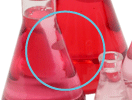Sandy Napel is a Professor of Radiology (and of Medicine-BMIR and Electrical Engineering, by courtesy), Co-Director of the Radiology 3D and Quantitative (3DQ) Imaging Laboratory, and co-Director of Information Sciences in Imaging at Stanford (ISIS).
Dr. Napel's primary interests are in developing diagnostic and therapy-planning applications and strategies for the acquisition and visualization of multi-dimensional medical imaging data. Examples are: creation of three-dimensional images of blood vessels using CT, visualization of complex flow within blood vessels using MR, computer-aided detection and characterization of lesions (e.g., colonic polyps, pulmonary nodules) from cross-sectional image data, visualization and automated assessment of 4D ultrasound data, and fusion of images acquired using different modalities (e.g., CT and MR). He has also been involved in developing and evaluating techniques for exploring cross-sectional imaging data from an internal perspective, i.e., virtual endoscopy (including colonoscopy, angioscopy, and bronchoscopy), and in the quantitation of structure parameters, e.g., volumes, lengths, medial axes, and curvatures. Finally, he is also interested in creating workable solutions to the problem of "data explosion," i.e., how to look at the thousands of images generated per examination using modern CT and MR scanners.
He is co-director of the Radiology 3D and Quantitative Imaging Lab, providing clinical service to the Stanford and local community, and co-Director of ISIS (Information Sciences in Imaging @ Stanford), whose mission is to advance the clinical and basic sciences in radiology, while improving our understanding of biology and the manifestations of disease, by pioneering methods in the information sciences that integrate imaging, clinical and molecular data. Active ISIS projects include content-based retrieval of similar lesions, and prediction of molecular phenotype from imaging features.










